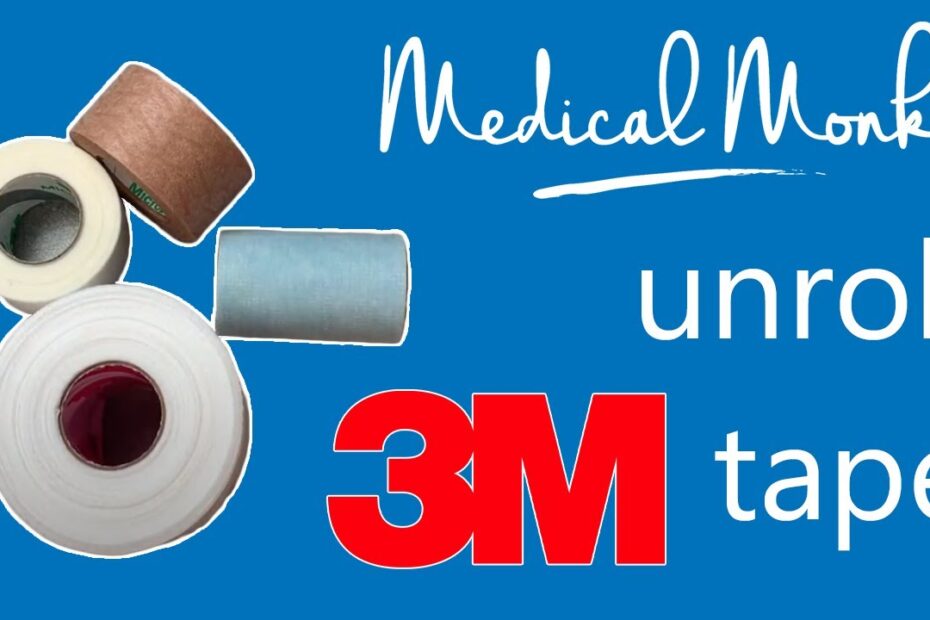What is the medical tape used for?
Medical tape might seem like just another sticky strip in your first-aid kit, but oh boy, it’s the unsung hero of the healthcare world—think of it as the duct tape for doctors, patching up boo-boos without the drama of a full-blown bandage fiasco. This adhesive wonder is primarily designed to hold dressings, bandages, or medical devices snugly against your skin, all while being gentle enough not to turn your arm into a rash-ridden disaster. Whether it’s keeping a wound covered during a clumsy kitchen mishap or securing that pesky IV line in a hospital setting, medical tape steps in with its reliable grip, saving the day one sticky situation at a time.
Now, let’s break down some key uses of medical tape in a list that’s as straightforward as slapping on a band-aid—because who has time for complications? Here are a few everyday applications that make this tape a must-have:
- Securing wound dressings to prevent infections and keep everything tidy.
- Supporting sprained joints or muscles, like when you’ve pulled a heroic dance move that your body regrets.
- Attaching medical devices, such as tubes or sensors, for monitoring during treatments.
What is the best medical tape to stick to skin?
When it comes to the best medical tape for sticking to skin, let’s face it—nothing’s more embarrassing than a bandage that peels off mid-stride, like that one friend who bails on plans at the last minute. You want a tape that’s as reliable as your favorite coffee mug, one that won’t irritate sensitive skin or leave behind a sticky mess worthy of a bad horror flick. Options like hypoallergenic paper tape or breathable fabric tape often steal the show for their gentle yet firm grip, making them ideal for everyday woes from scraped knees to post-surgery care. And hey, if you’re dealing with sweaty situations, look for tapes with strong adhesion ratings to avoid the classic flop.
To narrow it down, here’s a quick rundown of top contenders based on user feedback and expert reviews:
- Hypoallergenic paper tape: Perfect for sensitive skin, it sticks without the drama of rashes or residue, like a polite houseguest who knows when to leave.
- Silicone-based tape: This one’s a superstar for its painless removal, holding on tight during workouts but letting go easier than a bad habit.
Can you put medical tape directly on skin?
Yes, you can absolutely slap medical tape right on your skin—it’s basically the unsung hero of boo-boos and bandages, designed to stick without turning your epidermis into a sticky disaster zone. But hold your horses, tape enthusiasts; while it’s meant for direct contact, imagine if your skin threw a tantrum with redness or itching—always check for sensitivity first, because nobody wants their first aid to feel like a prank gone wrong.
When applying medical tape, keep things simple and snag-free with this handy list of tips:
- Clean the skin area thoroughly to avoid turning a minor fix into a bacterial bash.
- Gently press and hold for a few seconds to ensure it sticks like a champ without pulling hairs.
What’s the difference between athletic tape and medical tape?
When it comes to wrapping up your woes, athletic tape and medical tape might both stick around, but they’re as different as a marathon runner and a couch potato on a lazy Sunday. Athletic tape is the beefy buddy that athletes swear by for strapping down sprained ankles or supporting sore knees during a game—think of it as the no-nonsense enforcer that’s super elastic, super sticky, and built to withstand sweat and sudden sprints without budging. On the flip side, medical tape plays the role of the gentle giant in the healthcare world, designed for delicate duties like securing bandages or IV lines, where it’s all about being hypoallergenic and breathable to avoid turning a simple ouch into an itchy fiasco.
To break it down without taping over the facts, here’s a quick rundown of their key distinctions in an easy-peel list:
– Athletic tape: Focuses on support and stability for sports, often made from cotton or synthetic materials that’s water-resistant and reusable, making it perfect for those who like to play hard and tape harder.
– Medical tape: Prioritizes skin safety and adhesion for medical applications, typically featuring a paper or fabric backing that’s less elastic to prevent pulling on wounds, ensuring it’s the reliable choice for healing rather than hustling.
